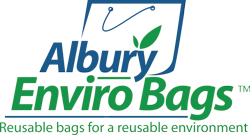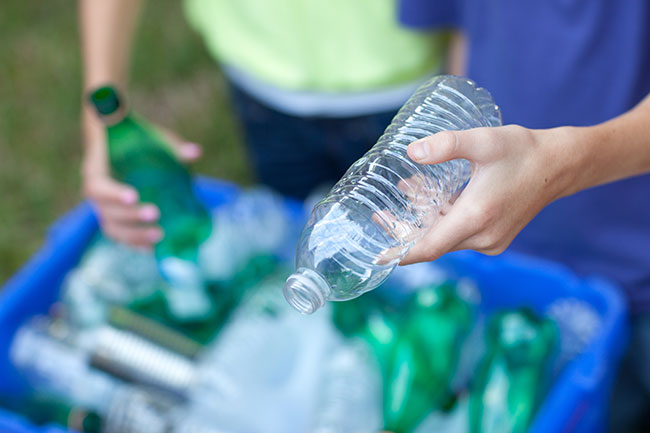Today, a lot of companies, businesses and individuals are looking for ways to reduce their carbon footprint and make positive impact on the environment. One way to do this involves changing the way we make decisions as consumers. When buying products, it’s important to take into account the materials they are made of, their capacity for reuse or recycling and the packaging they come in. By opting for environmentally friendly products, that are sold in recyclable or reusable packaging, consumers can help improve their environmental impact on an everyday basis.
Waste from product packaging represents a small – but highly controllable – segment of the overall environmental problem the planet is facing. In fact, every Australian household creates over a tonne of waste each year from products and their packaging. And, considering just one kilogram of aluminium generates more than 15 kilograms of greenhouse gas, making small changes to your purchasing decisions can a make a huge difference to the environment.
So, what are the biggest sustainability mistakes seen in packaging today? And how can you choose wisely in making your purchasing decisions more environmentally friendly? Below is a list of top sustainability packaging mistakes, and some tips to help you use your purchasing power for the good of the environment.
Chip packets
Chips and crisps are often packaged in bags made from multilayered plastic and foil fused together. For the manufacturer and distributor, this packaging is a major plus because it’s light, doesn’t take up much volume and looks appealing to customers. For the environment, it’s a different story. There is no technology available to separate the layers of foil and plastic. For this reason, most chip packets cannot be recycled and will take several years to degrade in landfill.
Sustainability tip: Choose to buy in bulk and avoid multi-layered materials where possible.
Single-serve foods
Certainly, single-serve containers, for example individual yoghurt servings or take-away coffee cups, can be highly convenient for consumers. But, in this case, what’s convenient for the consumer makes for a sustainability nightmare. Typically, the smaller the packaging, the more materials used to create the packaging, and the harder it is to recycle. For this reason, single-serve containers weap havoc in waste departments and recycling plants.
Sustainability tip: Where possible, choose to buy in bulk. When shopping for yoghurt, for example, opt for larger containers of yoghurt, instead of the individual serve-sizes, and use reusable tupperware containers to separate your yoghurt into servings. Also, invest in a reusable coffee thermos!
Toothpaste and toothbrushes
Squeezing out those final remnants of toothpaste from the toothpaste tube is not only frustrating for the individual trying to brush their teeth, but is also a source of long-term harm to the environment. Toothpaste packages present a problem for recycling and waste departments due to their small size, the laminate materials used to create them and the leftover toothpaste within them. As well as this, the toothbrushes themselves, and the blend of plastic and nylon bristles used to create them, are very difficult to disassemble and recycle.
Sustainability tip: Stay tuned till 2020 when Colgate-Palmolive, in partnership with advocacy group As you Sow (AYS), is set to release completely recyclable toothpaste tubes and packaging.
Plastic bottles
Plastic bottles are very popular with both consumers and manufacturers. And, while recycling habits are improving when it comes to plastic usage and production, the sheer volume of plastic bottles manufactured each year still outweighs the percentage of those that are recycled. Importantly, many companies are now starting to reduce their impact by using recycled plastic to create new bottles, and many sports arenas and parklands around the world have introduced recycling bins alongside waste bins to encourage recycling habits.
Sustainability tip: Look for plastic packaging that is marked with code 1, 2 or 3. This means the plastic is recycled, and the coding is used in most municipalities in Australia.
Online purchases
The rise of online shopping is certainly good for the wardrobe (and often the bank balance also) however the amount of packaging used to ship and deliver online purchases can be detrimental to the environment. In preparing customer orders, many companies will place a pre-packaged item into another parcel or box to reduce the risk of damage during shipment. This is commonly referred to as the “Russian Doll” approach, which is very wasteful.
Sustainability tip: Do your research and give your business to companies who choose to deliver using sustainable packaging materials. You can often find companies that use cornstarch or sorghum to create their packaging, which are materials that can be composted.
Pizza boxes
Although pizza boxes are generally made of recyclable materials such as cardboard, when food scraps and excess grease stick to stick to the box this ‘contaminates’ the cardboard and renders the box unrecyclable. Considering it would be near impossible to prevent melted cheese sticking to the bottom of a pizza box, many take-out companies are using degradable or compostable materials for their take-out boxes in a bid to be more environmentally friendly.
Sustainability tip: Clean out your used pizza box and tear off the greasy bottom. Put the greasy bottom in the compost and the rest of the ‘less-contaminated’ cardboard in the recycling bin.
Polystyrene foam
A lot of businesses have recently dropped polystyrene containers from their list of inventory due to their negative impact on both the environment and the health of humans. Unfortunately, take-away businesses are still making the change. Many fast-food chains use polystyrene containers to serve take-out meals, but in doing this – once food scraps or oil and grease come into contact with the container – the polystyrene is no longer recyclable.
Sustainability tip: Where possible, choose to eat from a place that does not serve their food in polystyrene containers and choose to protect the environment in making your purchasing decisions.
Plastic bags
Plastic bags pose a huge threat to the environment and can threaten marine wildlife if not disposed of properly. Although plastic bag usage has been reduced over recent years, there is still a lot more work that can be done. Many businesses have started to charge customers for plastic bags or have encouraged the use of reusable bags. Reusable bags made of cloth or recycled materials can be used numerous times – reducing waste – and prevent the use of plastic bags and their negative effect on the environment.
Sustainability tip: For those times you forget your canvas shopping bag, reuse the plastic bag to get as much life out of them before disposing of them.
Do your bit
As education of both consumers and manufacturers continues, you can do your bit to help reduce waste and lighten your carbon footprint. To kick-start your environmentally friendly habits, look into shopping with canvas bags – for example, our bags at Albury Enviro Bags are reusable and made from recycled materials. As well as this, choose products wisely, taking into consideration the materials they’re made from and the packaging they’re sold in. Remember, every little bit counts!





